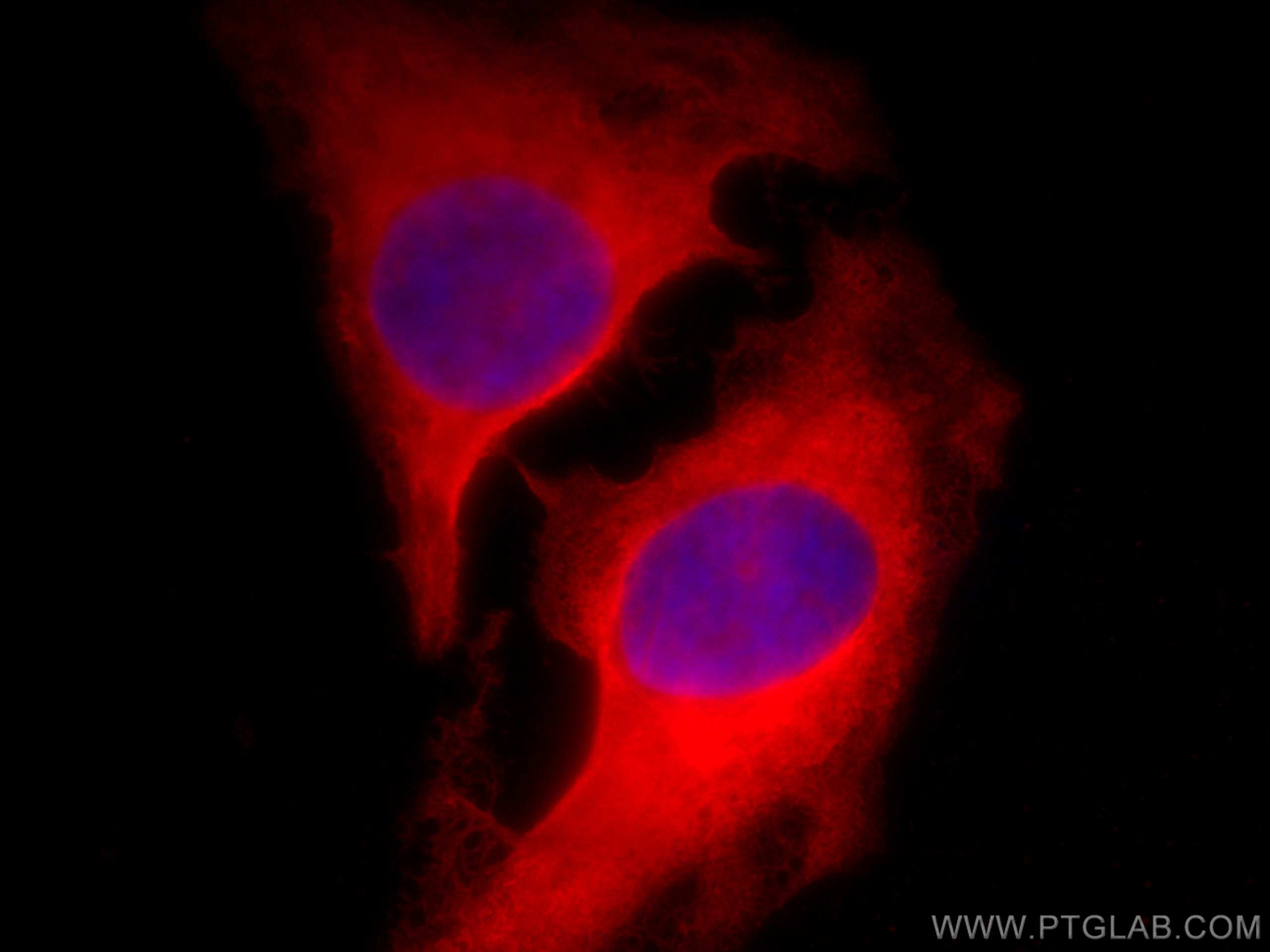CIP2A Monoklonaler Antikörper
CIP2A Monoklonal Antikörper für IF
Wirt / Isotyp
Maus / IgG1
Getestete Reaktivität
human, Ratte
Anwendung
IF
Konjugation
CoraLite®594 Fluorescent Dye
CloneNo.
2A3F3
Kat-Nr. : CL594-67843
Synonyme
Galerie der Validierungsdaten
Geprüfte Anwendungen
| Erfolgreiche Detektion in IF | HeLa-Zellen |
Empfohlene Verdünnung
| Anwendung | Verdünnung |
|---|---|
| Immunfluoreszenz (IF) | IF : 1:50-1:500 |
| Sample-dependent, check data in validation data gallery | |
Produktinformation
CL594-67843 bindet in IF CIP2A und zeigt Reaktivität mit human, Ratten
| Getestete Reaktivität | human, Ratte |
| Wirt / Isotyp | Maus / IgG1 |
| Klonalität | Monoklonal |
| Typ | Antikörper |
| Immunogen | CIP2A fusion protein Ag19598 |
| Vollständiger Name | KIAA1524 |
| Berechnetes Molekulargewicht | 905 aa, 102 kDa |
| Beobachtetes Molekulargewicht | 102 kDa |
| GenBank-Zugangsnummer | BC130564 |
| Gene symbol | KIAA1524 |
| Gene ID (NCBI) | 57650 |
| Konjugation | CoraLite®594 Fluorescent Dye |
| Excitation/Emission maxima wavelengths | 588 nm / 604 nm |
| Form | Liquid |
| Reinigungsmethode | Protein-G-Reinigung |
| Lagerungspuffer | BS mit 50% Glyzerin, 0,05% Proclin300, 0,5% BSA, pH 7,3. |
| Lagerungsbedingungen | Bei -20°C lagern. Vor Licht schützen. Nach dem Versand ein Jahr stabil. Aliquotieren ist bei -20oC Lagerung nicht notwendig. 20ul Größen enthalten 0,1% BSA. |
Hintergrundinformationen
Cancerous inhibitor of protein phosphatase 2A (CIP2A) was originally identified as a cellular protein phosphatase 2A (PP2A) inhibitor, and has been shown to control oncogenic cellular signals by suppressing the tumor suppressor PP2A. CIP2A overexpression has been found in several human malignancies including breast cancer, hepatocellular carcinoma, gastric cancer, head and neck cancer, colon cancer, prostate cancer and non-small cell lung cancer. CIP2A is a 83~102 kDa cytoplasmic protein. ( PMID: 26824320, PMID: 25458953, PMID: 29720672)
Protokolle
| Produktspezifische Protokolle | |
|---|---|
| IF protocol for CL594 CIP2A antibody CL594-67843 | Protokoll herunterladen |
| Standard-Protokolle | |
|---|---|
| Klicken Sie hier, um unsere Standardprotokolle anzuzeigen |


